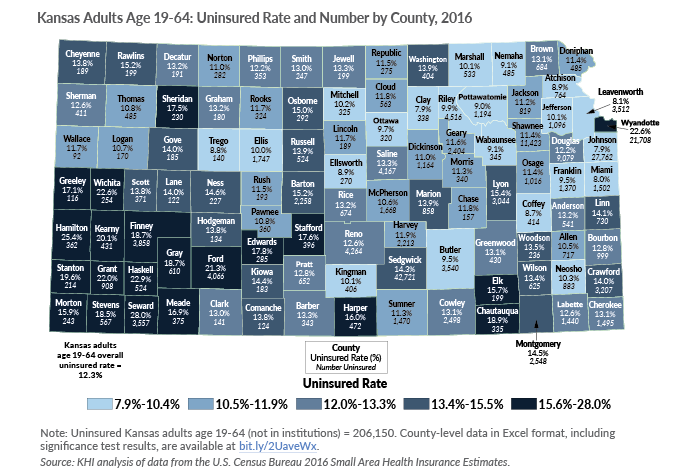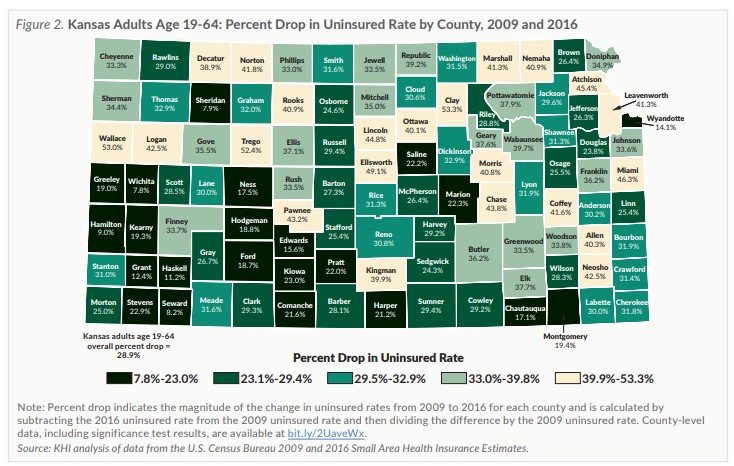Introduction
Earlier this year, the U.S. Census Bureau released the 2016 Small Area Health Insurance Estimates (SAHIE) providing county-level uninsured rates. This fact sheet focuses on the latest available data for nonelderly Kansas adults age 19-64 by county. While the 2017 statewide uninsured rate was published in a September 2018 KHI press release, the more-detailed data presented in this fact sheet is one year older due to when the Census Bureau releases it.
In 2016, the overall uninsured rate among Kansas nonelderly adults age 19-64 fell to 12.3 percent (206,150 uninsured), a drop of more than one-quarter since the implementation of the Affordable Care Act (from 17.3 percent in 2009 to 12.3 percent in 2016; a 28.9 percent drop). While Kansas has made strides in reducing the uninsured rate for nonelderly adults, health insurance remains unaffordable for many adults in Kansas. This fact sheet provides county-specific uninsured rates for Kansas nonelderly adults (Figure 1, above) based on the 2016 SAHIE data and changes in uninsured rates between 2009 and 2016 for each Kansas county (Figure 2).

